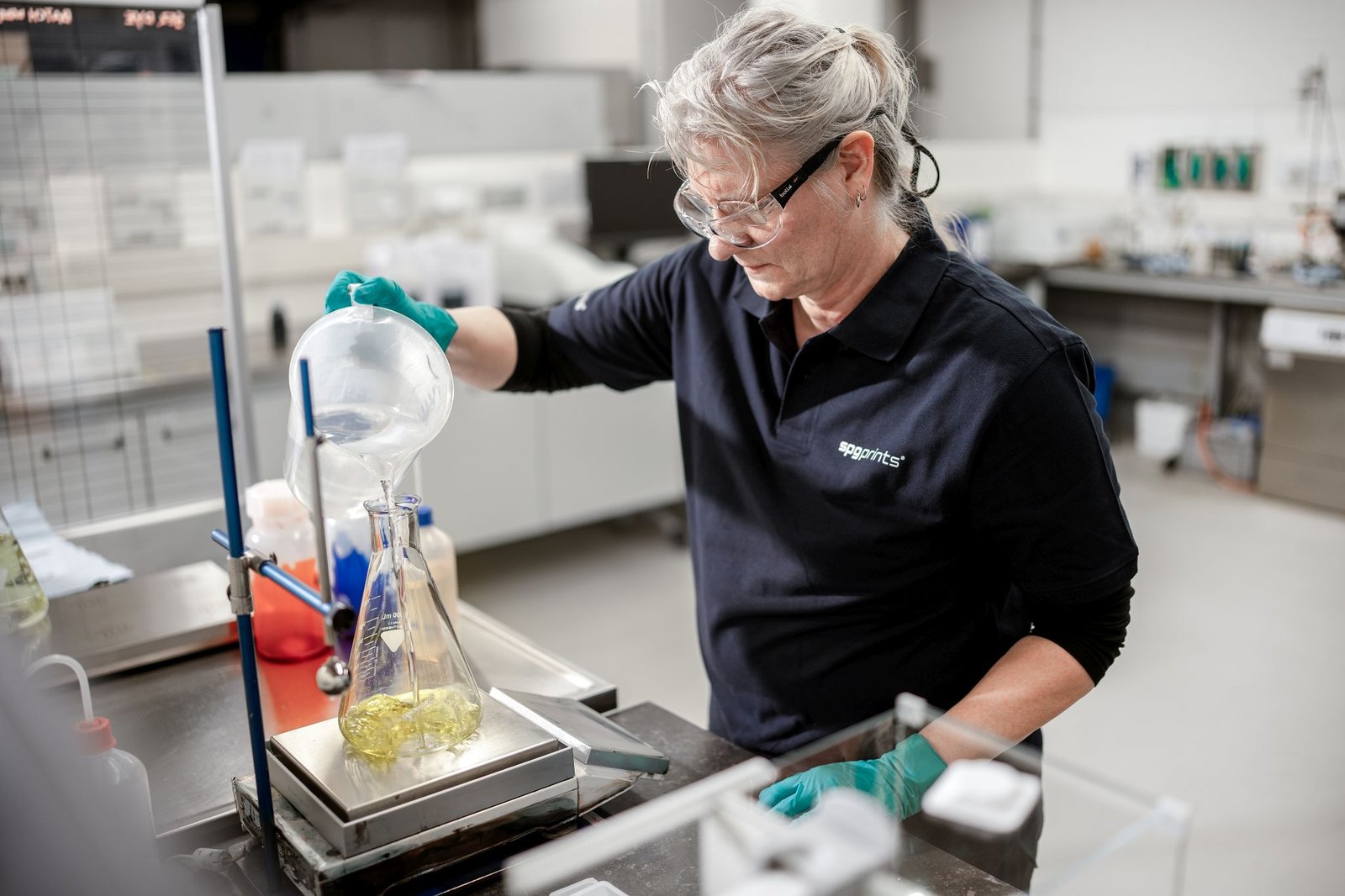Textile printers are always looking for ways to improve the quality of their designs and printed fabrics. An important element of design quality is the type of ink that is used for printing. In recent years, there has been a high demand for high-quality inks that are easy to print with and are also less damaging to the environment. How do you find the type of ink that best fits your production process when there are so many different types of ink out there?
Reactive inks
Reactive inks are commonly used inks in the textile industry nowadays. Especially among digital textile printers, reactive inks are very popular. The ideal application of reactive inks is printing on cotton. However, reactive inks can also be used when printing on other cellulosic fibers, including silk and wool.
Two main advantages of using of reactive inks for textile printing is high-quality of the colors and high wash fastnesses. The best color quality is reached when using reactive inks to print on cotton or viscose. When printing on silk or wool the colors can become less bright and intense. However, especially for top-level fashion brands, the high wash fastness is an important advantage of reactive inks. A high wash fastness provides long durability and usage of the printed textiles.
Acid inks
Acid inks are known for its vibrant colors, even when printing on materials which do not retain colors very easily. For that reason, acids inks are often used for printing wool and silk. With acid inks, you get a high level of color brilliance when printing on these type of materials. Besides wool and silk, acid inks are regularly used for printing swim clothing, which is often made of polyamide. First of all because of its high color brilliance, but also because acid inks have a high tolerance for chlorine and salt water.
Disperse inks
Disperse inks are the most commonly used inks in conventional printing on polyester fabrics. Disperse inks can also be used in digital textile printing. With disperse printing, the ink is sprayed directly on the textile after which it is being steamed and washed. The steaming process opens up the fibers allowing the ink to fully penetrate the textile. After steaming, the fiber closes again and the colors are locked into the material. This results in a very high color brilliance and a high wash fastness.
The last couple of years, polyester has become more and more popular within the fashion industry, which means there was a high demand for fast printing with disperse inks on this fabric. A problem, since experience showed that disperse inks do not work very well when printing with high-speed printers. Therefore many digital textile printers that want to print polyesters digital went to sublimation printing.
Sublimation inks
When digital textile printing on polyester became more and more popular, a new type of printing emerged within the digital textile industry: transfer printing or sublimation printing. Sublimation printing means that you print the sublimation ink onto paper after which you put this printed paper with the fabric in a calander. Under high temperature and pressure the ink changes from liquid to gas (sublimates). This gas easily penetrates the polyester fibers. After removing the pressure and lowering the temperature, the colors are locked into the fabric.
An advantage of using sublimation inks is that you do not need to steam and wash the textile after printing. For this reason, this technique is less environmentally damaging, easier and cheaper than other printing methods. On top of that, sublimation ink can be used for digital printing which means you can print large quantities at a faster rate.
Recently, textile printers have successfully printed direct to the polyester fabric with the same sublimation inks. It requires a more expensive printer as a belt system to hold the fabric, but it saves paper costs and you still do not need to steam and wash. In general sublimation printing on polyester results in somewhat lower fastnesses than printing with direct disperse inks. But in the fast fashion world that is an acceptable compromise for sustainability (no need to steam and wash).
Pigment inks
While in conventional printing around 60% of all fabrics are printed with pigment inks, it is logical that many customers ask for ‘digital pigment printing’. In fact, they are looking for an easy process with acceptable color and a very low price. In digital, those advantages can not be realized.
In the digital textile printing market, the use of pigment ink is still in its early days. A lot of research has been done in this area, and we are past the infancy stage now. Pigment inks are now perfectly suitable for digital printing, even with many advantages. Thanks to great improvements in availability, performance and quality, the demand for digital pigment ink solutions is rising. Pigment printing, is particularly well suited to blended fabrics. Today, there’s no other digital ink available for blended fabrics. Furthermore, pigment ink also can be used with natural and synthetic fabrics. Making it the most versatile option.
Unrivaled quality and color density with digital inks
The type of ink you use has a big impact on the quality of your prints. Therefore, we believe that you should only use the best inks available for your printing technique. Because of the large variety of inks available, it can be difficult to choose which one best fits your production process.
That is why we created our free Selection Guide for Digital Textile Printing Ink. In this guide you can find everything there is to know about ink, like the types of ink explained above, the advantages of reactive inks and factors you should consider when selecting ink. For example, what determines the different prices of ink types? Download our free Ink Selection Guide here:






